The Tomas Hertl contract extension sealed it: the San Jose Sharks are committed to their roster ‘retool.’ Not only does the organization feel they cannot financially stomach a long-term rebuild, but they also have faith in their current core of handsomely paid players to continue performing at high levels.
Erik Karlsson and Timo Meier have enjoyed rebound seasons; however, injury concerns have continued to plague the Swedish blueliner. Hertl has continued his impressive play from last season. Brent Burns plays a pivotal role as a top-pairing minutes-eater, but that role will hopefully be reduced and make him more effective next season. Outside of Marc-Edouard Vlasic, I would say that all of the top players are playing up to, or near, their large contracts.
But soon, the Sharks will be on the hook for even more salary. Opting to not trade him at the deadline, Alexander Barabanov is expected to re-sign in San Jose at some point for a decent cap hit. Plus, restricted free agents such as Mario Ferraro, Jonathan Dahlen, and recently acquired Kaapo Kahkonen will need extensions in the offseason too.
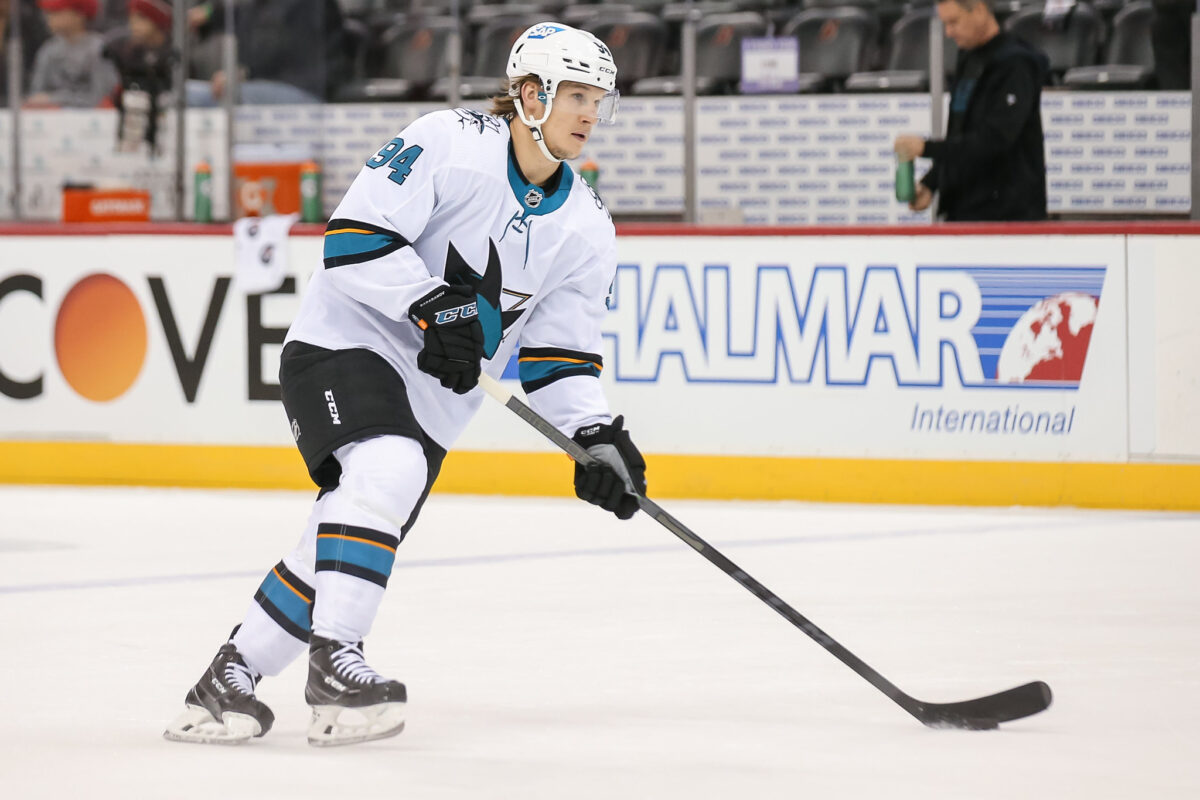
Even with the expected $1 million jump in salary cap space for the 2022-23 season, the Sharks will have limited funds to add talent. Only the Montreal Canadiens have fewer 5-on-5 goals scored this season than San Jose, making depth scoring a must-add in the offseason. While Kevin Labanc, who has been out most of the season with a shoulder injury, will make an offensive impact next season, the Sharks will still need more scoring.
When asked how the team will create more scoring next season, acting general manager (GM) Joe Will said, “If you’re able to draft, that’s generally your best way.” And he mentioned six forwards by name that he believes will add to the Sharks’ offense in the future.
Related: Ranking the Sharks’ 2022 Trade Deadline Moves
The most obvious is William Eklund, the 2021 seventh overall selection who projects to be a quality playmaker in the NHL as soon as next season. The others are the franchise’s top picks in the 2020 NHL Draft, where Doug Wilson Jr. made a clear effort to add top-notch offensive talent with their picks.
Ozzy Wiesblatt, Right Wing
Unfortunately, and largely due to issues outside his control, Ozzy Wiesblatt has put up the worst numbers among the group of top forwards from that draft. That’s despite him being the highest selected of them all, warranting the 31st overall pick after putting up 25 goals and 70 points in 64 Western Hockey League (WHL) games in 2019-20.
Sadly, that goal-scoring rate has not continued. He had just seven goals and 28 points in 23 games last year, then dropped to 10 goals and 41 points in 43 games so far this season. But those numbers need some context.
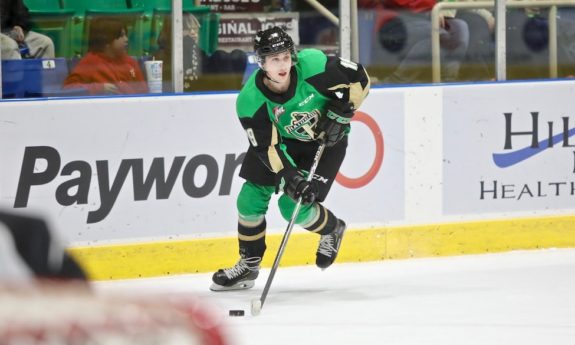
His WHL team, the Prince Albert Raiders, is one of the worst in the league. They traded their top player and captain, Kaiden Guhle, earlier in the season. But Wiesblatt still has the best points-per-game rate and most assists on a team that lacks talent, which is a positive.
Ahead of the junior league’s delayed start to the 2020-21 season, Wiesblatt tallied two goals and an assist in six games for the San Jose Barracuda. After his team’s WHL season ends on April 16, he could slot into a couple of American Hockey League (AHL) matches in the Barracuda’s late-season push for the final Pacific Division playoff spot.
Thomas Bordeleau, Center
The fifth-leading scorer on a stacked University of Michigan roster, Thomas Bordeleau has taken a small step back in his sophomore season for the Wolverines. But calling it a “sophomore slump” would be disingenuous to the circumstances the 2020 38th overall pick has been thrown into.
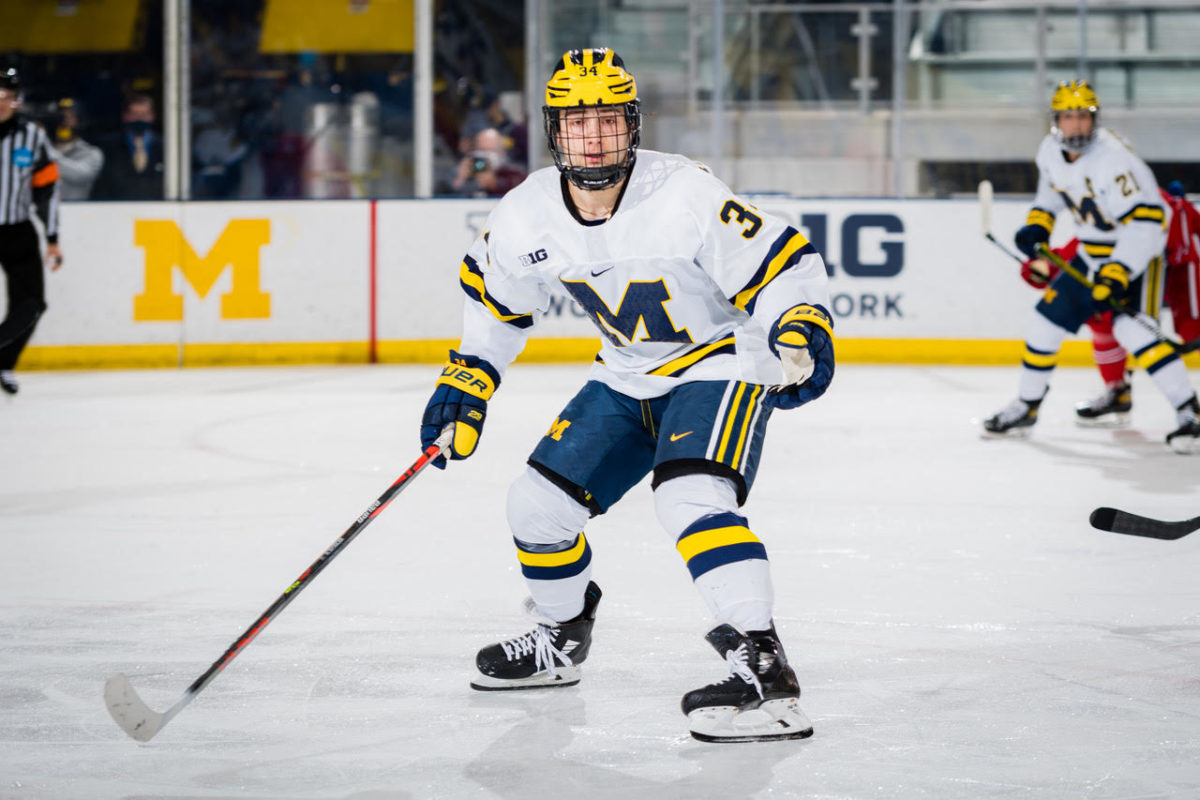
Yet again, Bordeleau missed out on the World Junior Championships, this time due to his own positive COVID-19 result. He missed six games and returned with less sensational results than he was used to. Despite a few of his teammates receiving the call, he did not get the chance to represent his country at the Olympics either.
And Michigan has given him less help this season. In 2020-21, Vegas Golden Knights’ first-round pick Brendan Brisson was stapled to his wing. But this season, Brisson has moved to the top line with Kent Johnson and Matty Beniers, and other top prospects like Dylan Duke and Mackie Samoskevich paired up alongside junior center Jonathon Beecher.
In a slightly reduced role with less help at 5-on-5, Bordeleau is scoring at a point-per-game pace and is a top power-play contributor on the top-ranked college program. He could return to college for his junior year, but I foresee him taking one of the Sharks’ four available contract spots after the NCAA playoffs come to an end.
Tristen Robins, Center/Right Wing
Selected later in the 2020 second round, Robins had an impressive 33 goals and 73 points in 62 games in the 2019-20 WHL season. Unfortunately, injury issues plagued the forward in the already shortened 2020-21 season, as he notched 10 goals and 23 points in just 18 games.
Now Robins is a top WHL producer. In the 2021-22 season, he ranks 13th in points, second in game-winning goals and second in power-play goals. He’s one of two players on the Saskatoon Blades who are above a point-per-game.
Along with Wiesblatt, he slotted into two games for the Barracuda last season and could rejoin that group pending Saskatoon’s bid for the WHL playoffs.
As Dobber Prospects contributor Donesh Mazloum wrote about Robins in November, “Robins may not have the pure skill to be a point per game talent on his own. However, he has the versatility to play anywhere in the lineup and the offensive pop to be a secondary option on a scoring line.”
Daniil Gushchin, Left Wing
While the Sharks could have opted to keep the Russian winger in the United States Hockey League (USHL) or move him to the professional ranks of the AHL, they opted to transition him to the Ontario Hockey League (OHL) for 2021-22. Daniil Gushchin simply went from a top USHL goal-scorer on the Muskegon Lumberjacks to a top OHL sniper for the Niagara IceDogs.
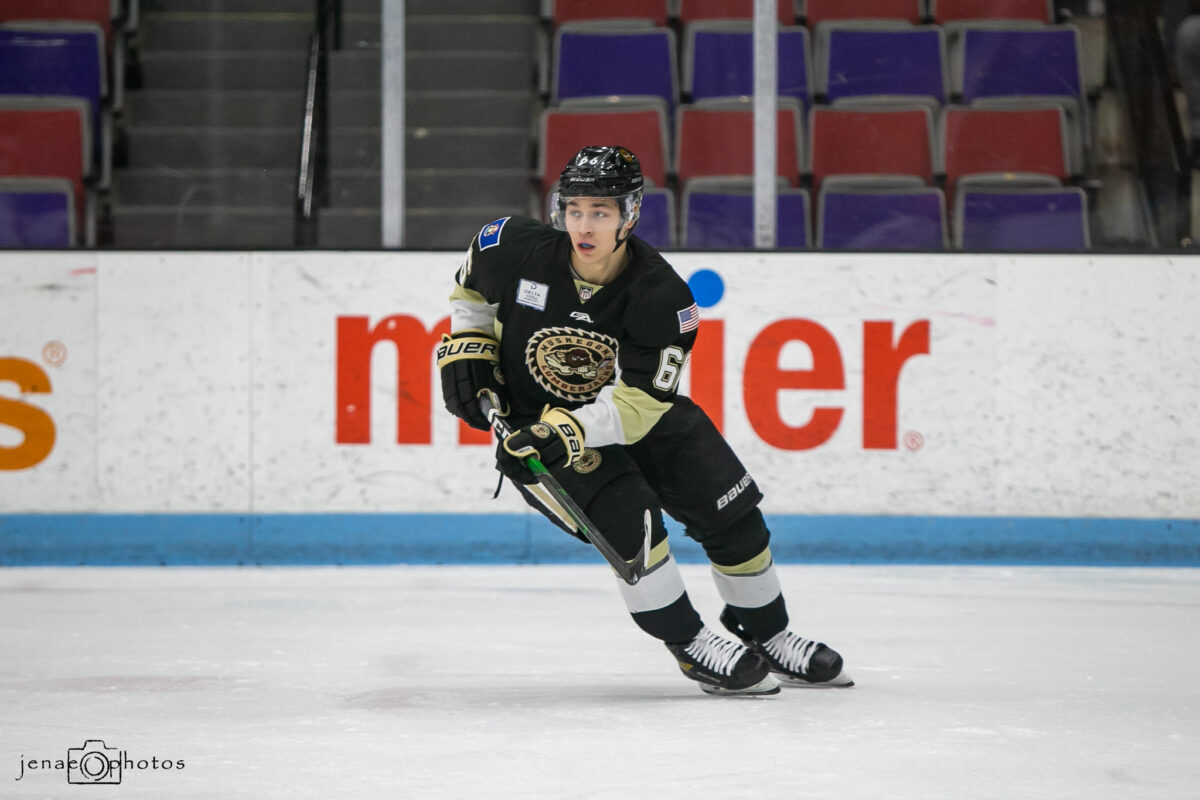
The 5-foot-10 winger scored 22 goals and 47 points in the USHL during his draft year, then followed that mark with 32 goals and 64 points in 46 points in his final season with Muskegon. Due to Russia not bringing prospects playing in the North American junior leagues, he was not selected for the World Junior Championships.
In a new league and club this season, Gushchin has been nothing short of dominant for Niagara. His 36 goals this season is double the mark of the second-highest scorer on his team. His 65 points through 43 games are also 29 points above the next-best teammate.
Gushchin thrives because of his great puck skills and impressive shot, which were memorably put on display at the Sharks’ prospect scrimmage last August. Mitchell Brown’s tracked data of Gushchin make him out to be one of the top offensive catalysts in the OHL this season.
Brandon Coe, Left Wing
When the Sharks selected him in the fourth round in 2020, the word that surrounded Brandon Coe was “raw.” After all, 6-foot-5 goal-scoring wingers are not something many teams possess. Aided by his smooth skating, he put up 25 goals and 57 points in 60 OHL games in his draft year.
But the league never returned for the 2020-21 season. Coe had to slot into the AHL as an 18/19-year-old recent fourth-round pick, a situation usually prohibited in the CHL/NHL agreement.
During that season, Coe put up only a goal and five points in 17 games, but he did gain great experience as a professional hockey player. That experience has turned him into a top OHL player in 2021-22.
For the North Bay Battalion, Coe has tallied 32 goals and 91 points in 57 games. He was in the running for the scoring title to start the season but has cooled to fifth place in the league. He’s also fourth in assists league-wide.
2022-23 Season Readiness
For the wingers, there should be an open competition to make the NHL roster. The only winger locked in for the Sharks’ top-six next season is Meier, but Barabanov and Eklund should also take those spots too. Rudolfs Balcers and Labanc are others likely to fill middle-six scoring roles, but inconsistency and injury have greatly impacted their 2021-22 campaigns.
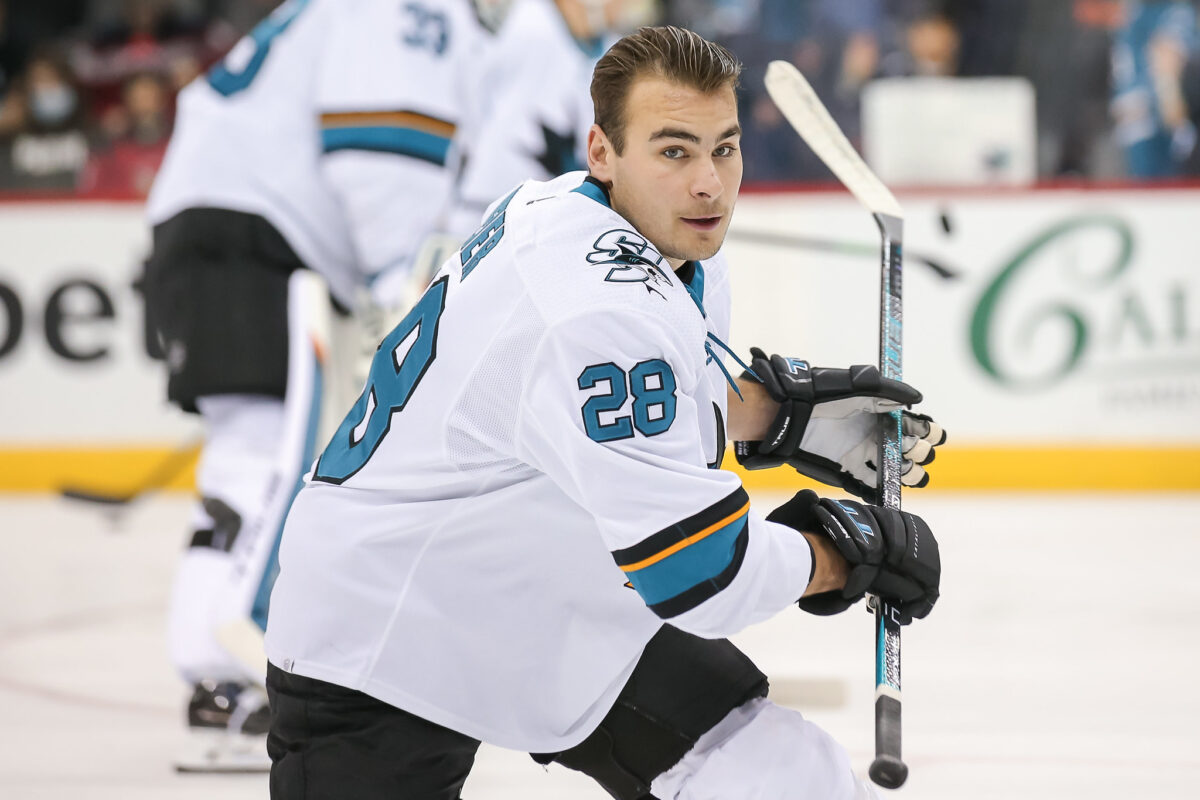
The most likely to make the roster, in my opinion, is Bordeleau. While the college season tends to play less frequently in comparison to the Canadian junior leagues, the struggles he’s endured and the higher level of competition he’s faced should prepare him for the grind of the NHL. He could battle Nick Bonino for the third line center spot or start on the wing before transitioning back to center like the Sharks did with Hertl.
But the depth and diversity of this pool of prospects make this a great situation for the Sharks. If the team wants a speedy winger for help in the transition game, Wiesblatt could get some NHL action. If they need a pure sniper to add goal scoring, they could put Gushchin alongside a playmaker.
If the Sharks fall back to the power-play struggles they had earlier in 2021-22, they could call up Robins. Besides Bordeleau, all these prospects are shoo-ins for the Barracuda’s top-six, if not making NHL impacts.
The organization has huge money tied into Karlsson, Hertl, Couture, Burns, and Vlasic. If these Sharks are to be competitive in the next couple of seasons, it will have to be on the backs of quality performance from talented youngsters on rookie salaries.
What do you think of the Sharks’ 2020 NHL Draft class? Let me know in the comments!
